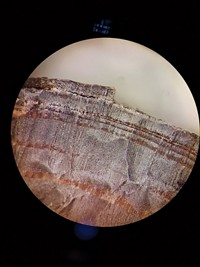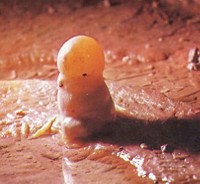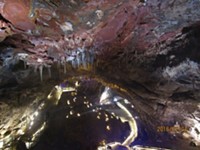Advertisement
Grab your lab coat. Let's get started
Welcome!
Welcome!
Create an account below to get 6 C&EN articles per month, receive newsletters and more - all free.
It seems this is your first time logging in online. Please enter the following information to continue.
As an ACS member you automatically get access to this site. All we need is few more details to create your reading experience.
Not you? Sign in with a different account.
Not you? Sign in with a different account.
ERROR 1
ERROR 1
ERROR 2
ERROR 2
ERROR 2
ERROR 2
ERROR 2
Password and Confirm password must match.
If you have an ACS member number, please enter it here so we can link this account to your membership. (optional)
ERROR 2
ACS values your privacy. By submitting your information, you are gaining access to C&EN and subscribing to our weekly newsletter. We use the information you provide to make your reading experience better, and we will never sell your data to third party members.
Analytical Chemistry
Range Of Radiocarbon Dating Gets A Boost
Analytical Science: New data from ancient lake’s sediments dramatically improve the accuracy of 14C dating
by Sarah Everts
October 18, 2012
| A version of this story appeared in
Volume 90, Issue 43

For more than 50,000 years, an ancient lake called Suigetsu on Japan’s Honshu island has been accumulating alternating layers of fossilized algae and leaves that settle at its bottom every season. Now, an international team of researchers from Japan, Germany, and the U.K. reports that a 40-meter core of Lake Suigetsu’s sediment provides a geochemical record that can dramatically improve the accuracy of radiocarbon dating (Science, DOI: 10.1126/science.1226660). Dating based on the radioactive decay of 14C is essential to many fields, from climate research to archaeology.



In particular, the Lake Suigetsu sediment core improves the accuracy of radiocarbon dating for the period between 12,000 and 52,800 years ago, says team member Christopher Bronk Ramsey of Oxford University. “These beautifully preserved leaves give direct access to past radiocarbon values,” he says.
To date objects of unknown age through the radioactive decay of 14C, researchers need reference materials, such as tree rings or lake sediments, that divulge historical levels of atmospheric 14C. The levels vary from year to year depending on the amount of cosmic rays that bombard Earth’s atmosphere, turning nitrogen into 14C, which is radioactive, notes Paula J. Reimer, an archaeologist at Queen’s University Belfast, in a commentary about the work.
Tree rings, a direct proxy for atmospheric 14C levels, go back only as far as 12,000 years. Until now, researchers using radiocarbon dating have had to turn to other nonatmospheric proxies such as ocean sediments to learn about 14C futher back in time, Reimer adds. However, the ocean is more carbon-rich than the atmosphere, and researchers must adjust for ocean carbon-loading, which decreases the precision of carbon dating.
“The new Suigetsu radiocarbon record is a big deal,” comments John Southon, a geochemist at the University of California, Irvine, who was not involved in the research. “It’s the first 14C calibration record extending well back into the last glacial period that directly samples the atmosphere.”
The lake has several special features that make it an ideal proxy for ancient levels of atmospheric 14C, says Takeshi Nakagawa, the Newcastle University researcher who led the study’s lake-coring team. First, it was never covered by glaciers during the last ice age, so it was exposed to the atmosphere and could collect seasonal tree litter from nearby forests for more than 50,000 years.
Second, the lake’s annual sediment layers are both visually and chemically distinct. Leaf fossil layers are darker and contain manganese and iron, which the team measured by X-ray fluorescence spectrometry. Diatom algae fossils are lighter and don’t contain these metals. The repeating alternation of the two sedimentary layers marks a year.
The lake’s sediments also form an ideal record of 14C levels because they are undisturbed by inflowing rivers or underwater creatures, Nakagawa adds. “In the oxygen-free environment, organisms cannot survive,” he says.
Concerns about the accuracy of radiocarbon dating for dates older than about 20,000 years ago “have resulted in unresolvable debate over the timing of processes important in human prehistory,” says Joan Brenner-Coltrain, an anthropologist at the University of Utah. This has limited “our ability to resolve questions regarding the extinction of European Neanderthals, the peopling of Australia, the extinction of Australian megafauna, and the peopling of the New World.”
The new Suigetsu calibration curve won’t immediately resolve these debates, but it will better inform them, she says. “It represents a significant advance in our ability to reconstruct the past.”





Join the conversation
Contact the reporter
Submit a Letter to the Editor for publication
Engage with us on Twitter